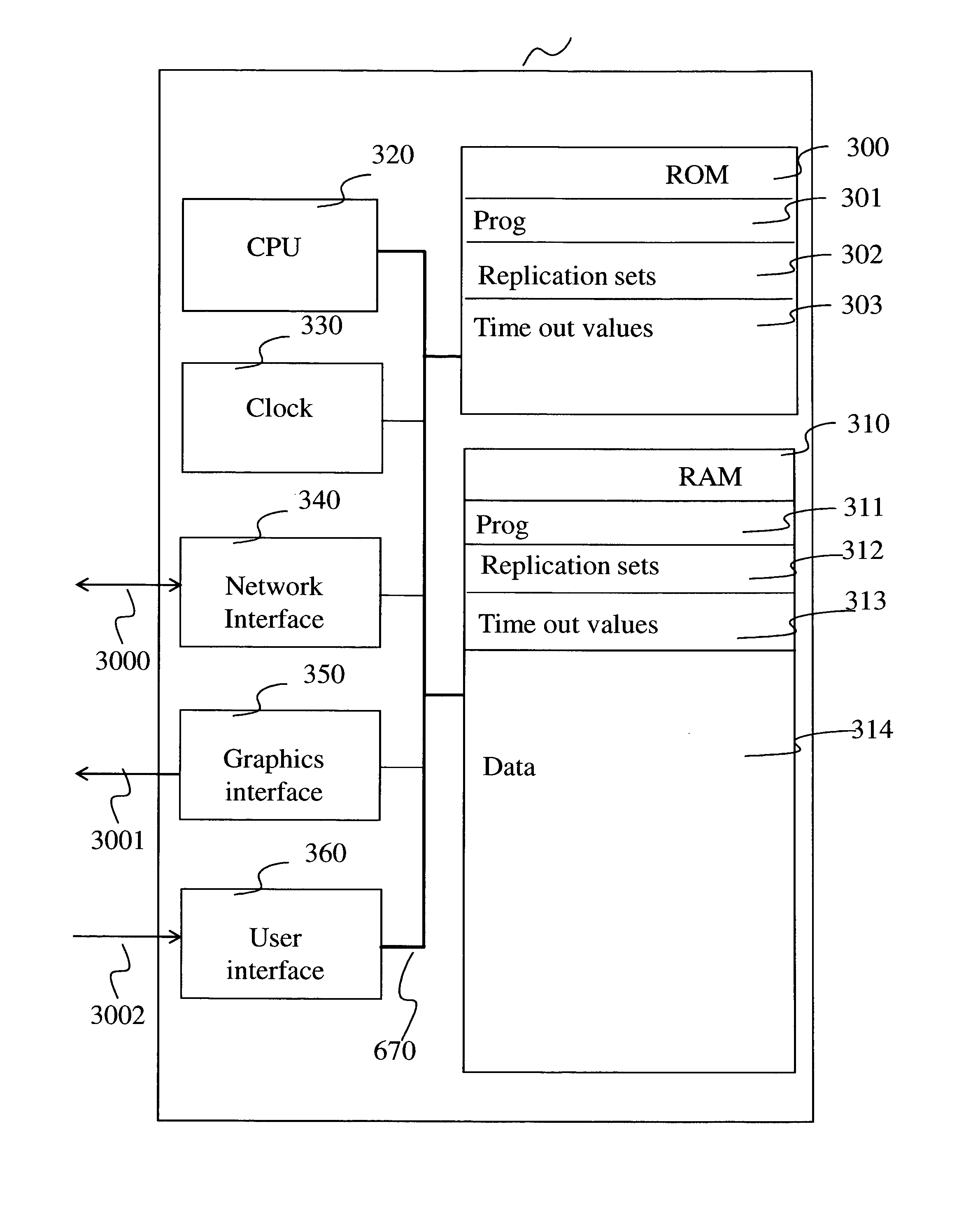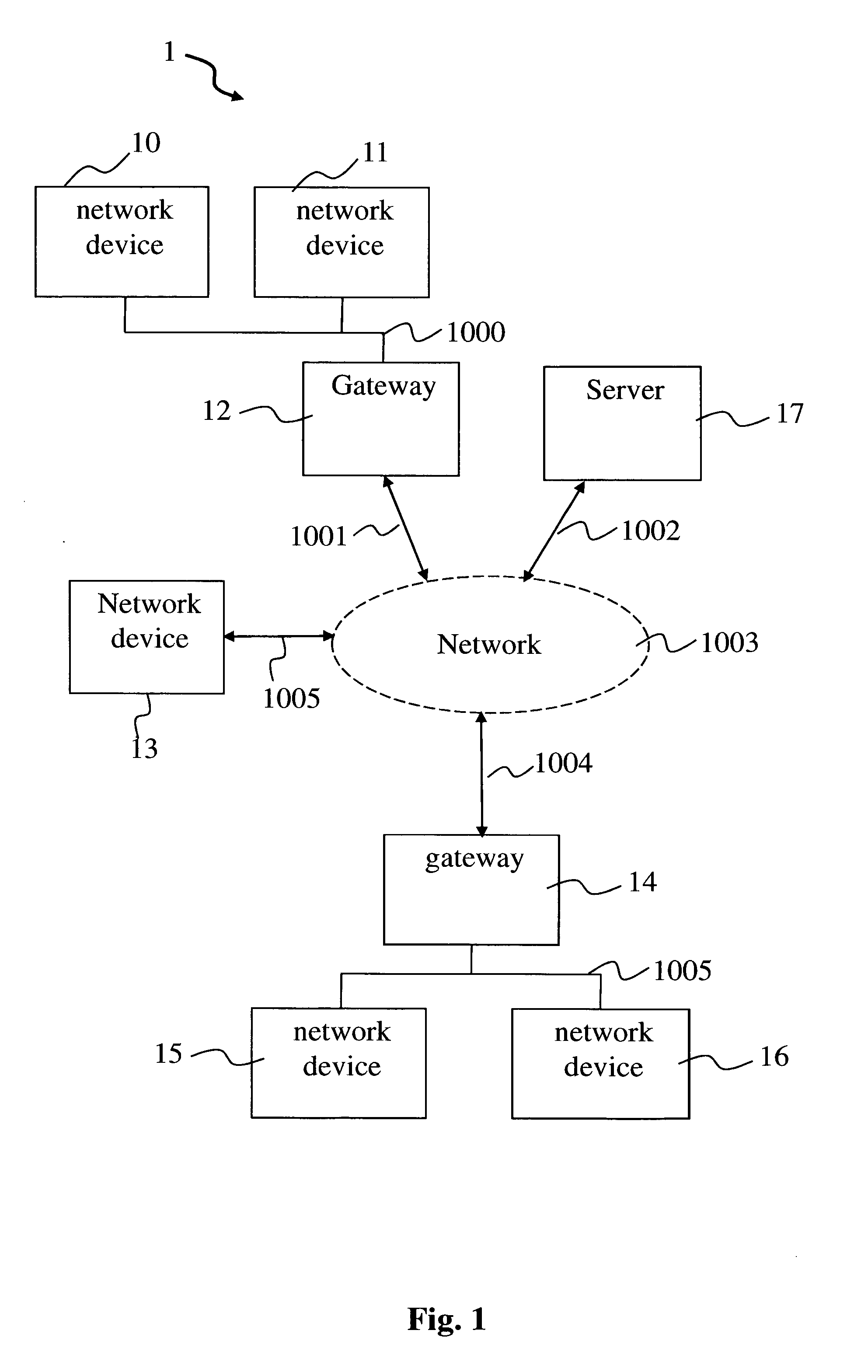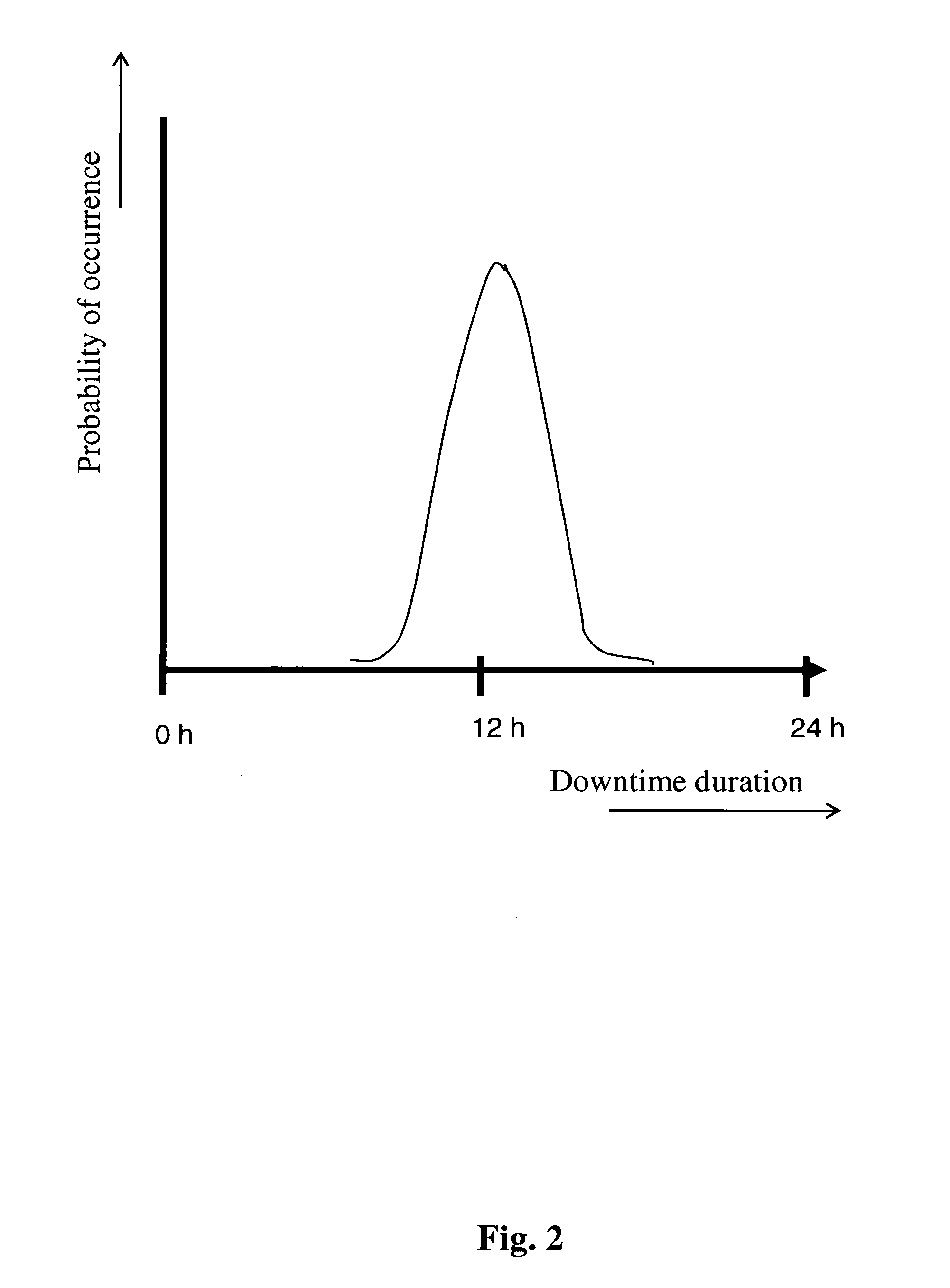Method of data replication in a distributed data storage system and corresponding device
a data storage system and data replication technology, applied in the field of distributed data storage systems, can solve the problems of insufficient data replication, unavailability of devices, and decreased data replication level, and achieve the effect of restoring data replication level, and reducing data replication level
- Summary
- Abstract
- Description
- Claims
- Application Information
AI Technical Summary
Benefits of technology
Problems solved by technology
Method used
Image
Examples
Embodiment Construction
[0025]FIG. 1 shows a distributed storage network architecture suited for implementing a particular variant of the invention. The figure shows an network 1003 to which are connected a gateway 12, connecting network devices 10 and 11 to network 1003, a server 17, another gateway 14 which connects network devices 15 and 16 to network 1003, and a network device 13 directly connected to network 1003. All or only some of devices 10-16 can be considered as being distributed storage devices in the distributed storage network according to their capacity to store data and according to membership of the distributed storage network.
[0026]Other types of networks than illustrated in FIG. 1 are compatible with the invention. For example, networks comprising one or more network switching nodes or networks comprising one or more subnetworks, and networks connecting wireless network devices.
[0027]The invention can be implemented in any type of network device, such as a home gateway connecting a home ...
PUM
 Login to View More
Login to View More Abstract
Description
Claims
Application Information
 Login to View More
Login to View More - R&D
- Intellectual Property
- Life Sciences
- Materials
- Tech Scout
- Unparalleled Data Quality
- Higher Quality Content
- 60% Fewer Hallucinations
Browse by: Latest US Patents, China's latest patents, Technical Efficacy Thesaurus, Application Domain, Technology Topic, Popular Technical Reports.
© 2025 PatSnap. All rights reserved.Legal|Privacy policy|Modern Slavery Act Transparency Statement|Sitemap|About US| Contact US: help@patsnap.com



